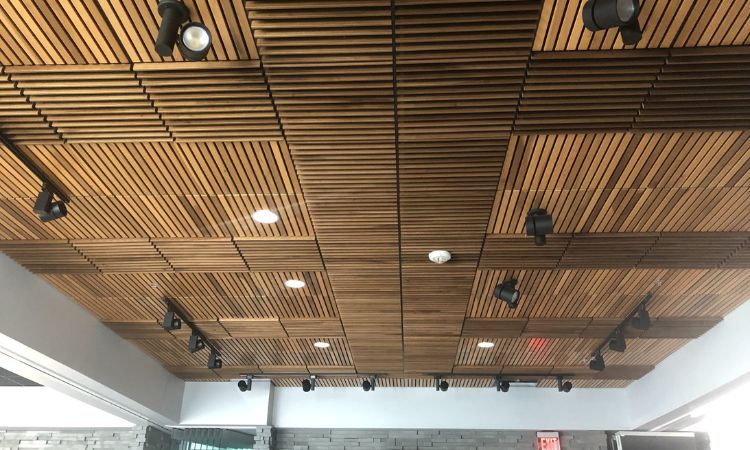
The global acoustical ceiling market size is expected to grow in the forecast period of 2024-2032 at a CAGR of 8%. This significant growth can be attributed to the increasing demand for soundproofing solutions in commercial, residential, and industrial spaces. Acoustical ceilings are a crucial component in modern building designs, offering not only aesthetic appeal but also functional benefits like noise reduction and improved acoustics. This blog post delves into the various aspects of the global acoustical ceiling market, including product types, applications, regional performance, market dynamics, and the competitive landscape.
Market Size and Share
The acoustical ceiling market has witnessed robust growth over the past few years, driven by urbanization, the expansion of the construction industry, and increasing awareness about noise pollution. As of 2023, the market size was estimated at USD 8.5 billion. With a projected CAGR of 8% from 2024 to 2032, the market is set to reach approximately USD 16.1 billion by the end of the forecast period.
Market share distribution varies by product type and application. Mineral fibre acoustical ceilings dominate the market due to their cost-effectiveness and superior sound absorption properties. Gypsum-based acoustical ceilings are also gaining traction, especially in residential applications, owing to their fire-resistant properties and aesthetic appeal.
Product Type Analysis
Mineral Fibre
Mineral fibre acoustical ceilings are the most widely used type, known for their excellent sound absorption capabilities. They are commonly used in commercial buildings like offices and retail spaces. The market for mineral fibre acoustical ceilings is expected to maintain its lead due to their affordability, ease of installation, and ability to improve indoor air quality by reducing airborne particles.
Gypsum
Gypsum acoustical ceilings are popular in residential settings due to their fire resistance and smooth finish. They offer moderate sound absorption and are often used in conjunction with other materials for enhanced performance. The demand for gypsum acoustical ceilings is growing as more residential projects emphasize both safety and aesthetics.
Others
Other materials used in acoustical ceilings include wood, metal, and composite materials. These are often employed in specialized applications where specific aesthetic or performance characteristics are desired. The market for these materials is niche but growing steadily, driven by custom architectural designs and high-end commercial projects.
Application Analysis
Commercial
The commercial sector is the largest application segment for acoustical ceilings. This includes offices, retail stores, educational institutions, and healthcare facilities. The demand in this segment is driven by the need for noise control in open-plan offices, enhancing speech intelligibility in classrooms, and creating serene environments in healthcare settings.
Residential
In the residential sector, acoustical ceilings are becoming increasingly popular in multi-family housing units, apartments, and luxury homes. The rise in urban living has heightened the need for soundproofing solutions to ensure privacy and comfort. Gypsum and composite materials are particularly favored in this segment for their fire resistance and aesthetic versatility.
Industrial
Industrial applications of acoustical ceilings include manufacturing plants, warehouses, and other large facilities where noise control is critical for worker safety and productivity. The use of durable and easy-to-clean materials is essential in these environments, making mineral fibre and metal acoustical ceilings the preferred choices.
Regional Analysis
The acoustical ceiling market exhibits varied performance across different regions.
North America
North America is a leading market due to the high rate of commercial construction and renovation projects. The U.S. and Canada are key contributors, with strong demand from the corporate and healthcare sectors.
Europe
Europe follows closely, with significant growth in countries like Germany, the UK, and France. The emphasis on energy-efficient and sustainable building practices in this region boosts the demand for acoustical ceilings.
Asia-Pacific
The Asia-Pacific region is expected to witness the fastest growth, driven by rapid urbanization and industrialization in countries like China, India, and Japan. The expanding middle class and increasing construction activities fuel market growth.
Latin America
In Latin America, Brazil and Mexico are the primary markets, with growing investments in infrastructure and residential projects.
Middle East & Africa
The Middle East & Africa region shows steady growth, with the UAE and Saudi Arabia leading the market due to their large-scale commercial and industrial projects.
Market Dynamics
SWOT Analysis
Strengths:
- High demand for noise control solutions
- Increasing construction activities
Weaknesses:
- High installation and maintenance costs
- Limited awareness in developing regions
Opportunities:
- Technological advancements in materials
- Expansion into emerging markets
Threats:
- Fluctuating raw material prices
- Intense competition
Porter’s Five Forces Analysis
- Threat of New Entrants: Moderate, due to high initial capital investment.
- Bargaining Power of Suppliers: High, as specialized raw materials are required.
- Bargaining Power of Buyers: Moderate, with numerous suppliers available.
- Threat of Substitutes: Low, given the unique benefits of acoustical ceilings.
- Competitive Rivalry: High, with many established players competing for market share.
Key Indicators for Demand
- Increasing urbanization and construction activities
- Growing awareness about noise pollution and its health impacts
- Technological advancements enhancing product efficiency and aesthetics
Key Indicators for Price
- Raw material costs and availability
- Economic conditions influencing construction budgets
- Competitive pricing strategies among key players
Competitive Landscape
The acoustical ceiling market is highly competitive, with major players like Armstrong World Industries, Knauf, Saint-Gobain, and USG Corporation leading the market. These companies invest heavily in R&D to innovate and offer superior products. The competitive strategies include mergers and acquisitions, partnerships, and product launches to strengthen their market positions.